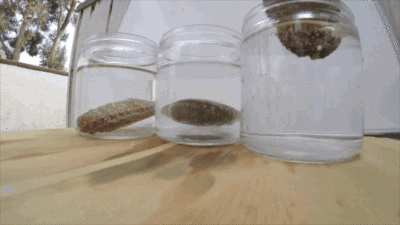
Climate change is affecting the oceans in more ways than just water temperature and sea level. It is also changing marine environments at their most basic chemical level! The carbon dioxide (CO2) released through the burning of fossil fuels is absorbed in part by the oceans. There, it reacts with water to form carbonic acid, which then disassociates and releases hydronium ions into the water. This process decreases the pH of the water, or increases the acidity. For millions of years, the pH of the ocean has been between 8.1 and 8.2. Since the 1950s, however, the pH has begun to decrease to as low as 8.0 in some areas. Although a shift of 0.1 does not seem very serious, the pH scale is logarithmic, meaning that a decrease of 0.1 shows a 30% increase in acidity!
 This process is expected to affect many marine animals. Most at risk are those organisms that use shells for protection. Clams, urchins, oysters, abalone, and other shellfish rely on calcium to keep their shells strong, just like our bones! But the calcium in these shells reacts with acidic water and is weakened. This means that as the ocean’s waters become more acidic, the shells of these mollusks are likely to become more brittle and less effective for protection from predators. Because these animals play an important role in the oceanic food chain, this is a concerning topic that many scientists are now researching heavily.
This process is expected to affect many marine animals. Most at risk are those organisms that use shells for protection. Clams, urchins, oysters, abalone, and other shellfish rely on calcium to keep their shells strong, just like our bones! But the calcium in these shells reacts with acidic water and is weakened. This means that as the ocean’s waters become more acidic, the shells of these mollusks are likely to become more brittle and less effective for protection from predators. Because these animals play an important role in the oceanic food chain, this is a concerning topic that many scientists are now researching heavily.
Written By: Alex Krowiak
Image Source: http://www.pmel.noaa.gov/co2/story/Ocean+Acidification


